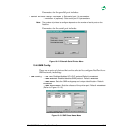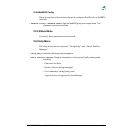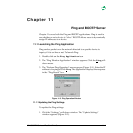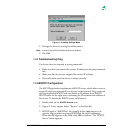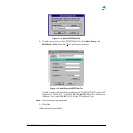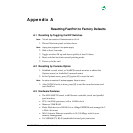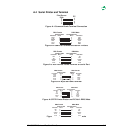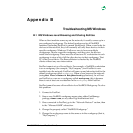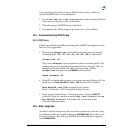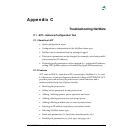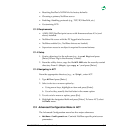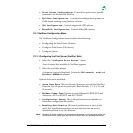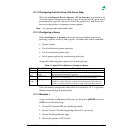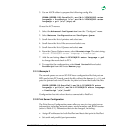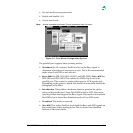
MIL-3000FTX Series of FastPort Print Servers B-1
Appendix B
Troubleshooting MS Windows
B.1 MS Windows-Level Browsing and Sharing Abilities
When a client machine comes up on the network, it usually comes up in a
pre-configured workgroup. The default workgroup for all NetBIOS
machines (including FastPort) is named Workgroup. When a user looks for
devices on the network, they will normally see only those devices in their
specific workgroup. Windows 95 allows a user to browse multiple
workgroups, choose a specific workgroup, and then view the devices
inside that workgroup. There must be at least one PC workstation in each
workgroup to store a list of all the other devices in that workgroup. That
PC is the BrowseMaster. The BrowseMaster is checked by the NetBIOS
clients without any user intervention.
FastPort cannot act as a BrowseMaster. For example, a NetBIOS workstation
is on a workgroup (for example, “MyCompany”) and FastPort is now
installed onto the network. FastPort will come up and advertise itself in the
default workgroup called workgroup. When a user browses the network
(using Net View or Network Neighborhood applications), he will not
see FastPort or even see a workgroup called workgroup, this is because
there is not at least one workstation in the workgroup with FastPort.
FastPort cannot become a BrowseMaster for a NetBIOS Workgroup. To solve
this problem:
1. Connect to FastPort.
2. Store a new NetBIOS workgroup name using either FastManage
package, nbmon.exe, or any other Digi International tool.
3. Once connected to FastPort, go to the “Network Protocol” section, then
to the “Microsoft SMB” subsection.
4. Change the property called “NetBIOS Workgroup.”
5. Change the workgroup name to the same as in the workgroup (that is,
“MyCompany”).



